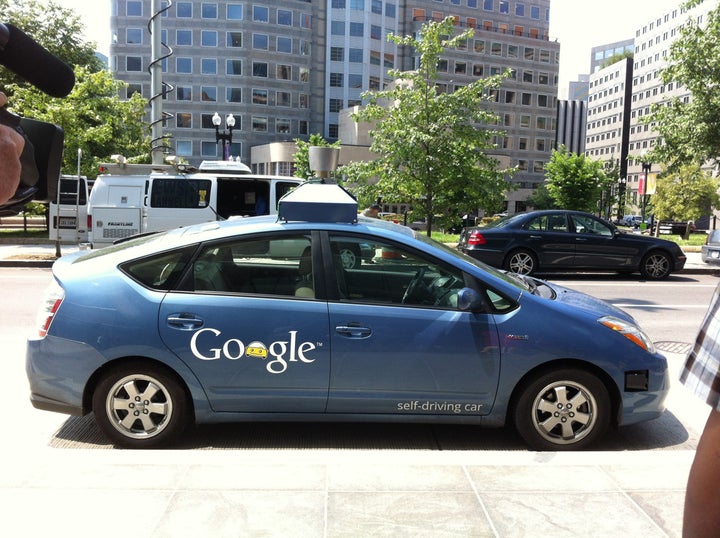
Gov. Jerry Brown of California signed a bill Tuesday that made the state the third after Nevada and Florida to legally sanction self-driving vehicles. But, believe it or not, a seemingly unrelated announcement from Monday may hold greater implications for how autonomous vehicles can get out of beta and into garages. And to strain credulity even further, I'll say up front that this discussion won't be complete without bringing up Victorian London's sewer system.
Let's take a step back: when news of California's new driverless vehicle bill ricocheted around the Web, news sites justifiably raised a wide range of potential issues with driverless cars, many of which I've also posed before (Will Robot Cars Get Stuck in Traffic?). To get a full fleet of autonomous autos on the road, we're going to have to quickly solve questions of liability, consumer trust, governance, and others.
California's announcement yesterday was a start: it set down requirements that autonomous cars have to meet for street-legality. But consider the other issues that have to be dealt with before buyers plunk down a down-payment on an auto-bot: Who will govern cloud-based control systems for a fleet of autonomous cars that talk to each other? What will road signs look like when half of vehicles are autonomous and half still require hands on the wheel? Who will need a license? How will fueling work if these vehicles run on electricity?
What's missing from the picture right now is demand for solutions -- economic demand for companies to solve these problems, and political demand for governments. There's currently not much demand for infrastructural and policy solutions because no one has an autonomous car yet. But, on the other hand, no one will have autonomous cars until some of these problems get sorted out.
Luckily, there's precedent for breaking this vicious circle, and the key is to view the problem not as an intractable chicken-and-egg situation but more like a pump that needs to be primed. In fact, plumbing has more to do with it than mere metaphor. Take Victorian London: by the mid-1800s, skyrocketing urban population density had led to the popularization of the flush toilet, but these newfangled water closets emptied into a centuries-old system of cesspit. (These were in turn periodically cleaned out by men equipped with shovels and horse-drawn carriages, which sounds like a great episode of Dirty Jobs).
The increased population density would have stressed this ancient system on its own, but to make matters worse, the newfangled toilets added a lot of water into the mix (quite literally), causing cesspits to overflow. The result was cholera outbreak after cholera outbreak, and in 1858, cesspits brimmed over into the streets and into the Thames, which, combined with an unseasonably warm summer, made life in London so smelly that that season became known as the Great Stink. Together with the discovery that cholera is transmitted via sewage, the Great Stink convinced Her Majesty's government to invest in the largest civil engineering project in the world at the time: a new sewer system for London.
The rest, as they say, is history: the new sewers made it even easier to install toilets in homes, and now Londoners take their commodes for granted. But early adopters were necessary to get the infrastructure installed. So who are today's versions of the porcelain pioneers of Victorian London?
How about this guy: Elon Musk, founder of Tesla Motors, who launched six solar-powered "supercharger" stations on Monday that can charge a Tesla car in half an hour. These electron stations won't stress the power grid -- in fact, Musk claims they'll create more energy than they withdraw. It's hard to imagine a future that has a full fleet of electric cars that don't draw from the power grid, of course. But getting electric cars onto the road now, and priming the infrastructure pump with these supercharging stations, is a great way to create demand for even better infrastructure solutions in the future.
Put another way, if you want to sell a lot of toilets but need new sewers to do so, start by selling a few toilets to create demand for sewers. If you want to sell electric cars but need charging stations, build enough charging stations that people feel comfortable investing in electric cars, which will then create demand for more charging infrastructure.
And if you want to sell autonomous vehicles, start by getting enough laws in place that allow you to eventually get people's rears in what used to be drivers' seats. This is, of course, exactly what Google is doing in California. Then, once you build the demand, the policy and infrastructure solutions will follow, like water down a pipe.
MIT AgeLab's Luke Yoquinto contributed to this article.